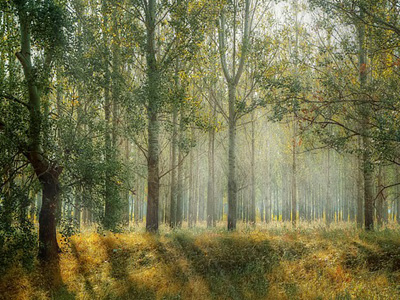What Trees Need to Grow and Survive
Trees grow by taking food and breathing. Trees take their food from two sources: from the earth they are in and from the air around them. The tree's roots are deep down in the earth and these roots suck up water from the soil they are embedded in. The water then rises up the tree through many tiny cells in the wood's stem until it reaches the green leaves and twigs. The water contains a great deal of nourishment and as it rises the growing cells keep what they need of the water. The rest is given off as vapour by the leaves through many tiny pores.
During the daytime the green leaves take from the air a gas called carbonic acid gas. This they separate into two parts called oxygen and carbon. The tree does not need the oxygen as food, so the leaves return it to the air, but they keep the carbon. This carbon becomes mixed with the water food drawn from the soil by the roots. Forming a liquid, it finds its way through many small cells and channels to feed the growing leaves, twigs and branches. Trees must breathe all the time. Scattered over the surface of the leaves, as well as over the skin (bark) of the tree, are many tiny mouths or openings called stomata. It is by these that the tree breathes during the day and during the night.
Each summer the tree adds a layer of new wood in a circle round the tree trunk. These circles are broad if there has been plenty of sunshine and the tree has grown well, and narrow if the season has been wet and sunless. This new layer of wood is always found under the bark, which is the outer skin of the tree and serves to protect the new young wood. As winter gets nearer, the cells in this new layer of wood slowly dry out and it becomes a ring of hard wood. This is why if you look at part of a tree trunk that has just been cut down you can tell how old the tree is simply by counting the circles of wood in the tree trunk.

